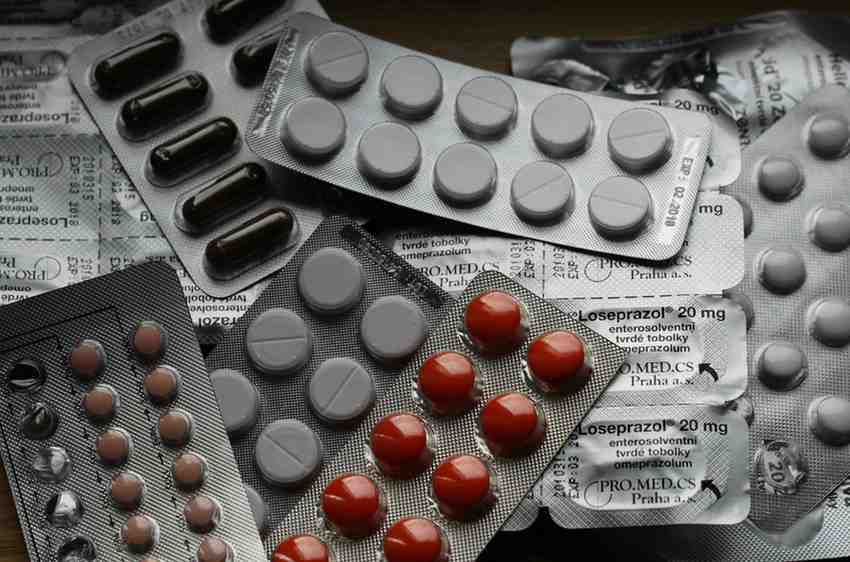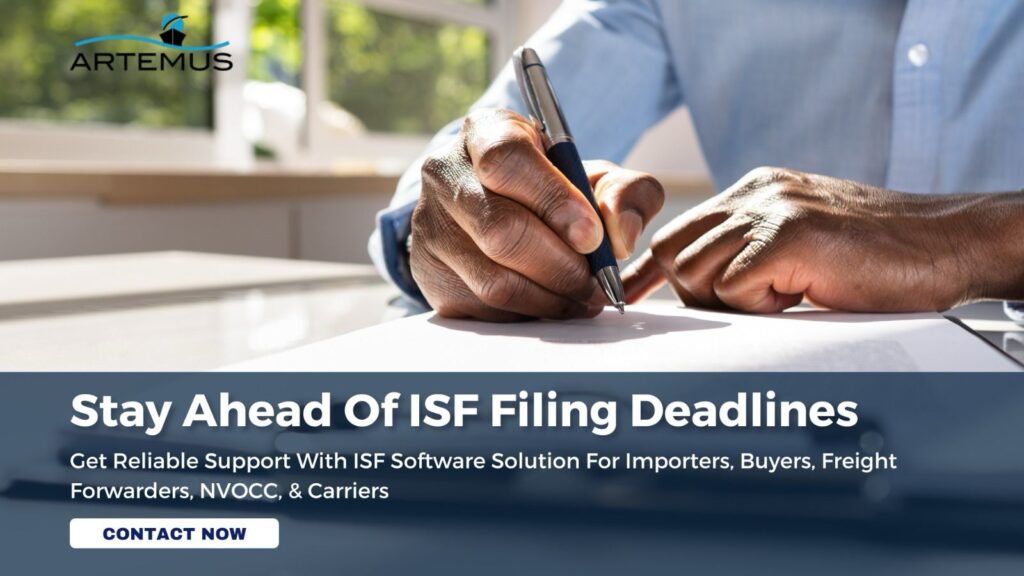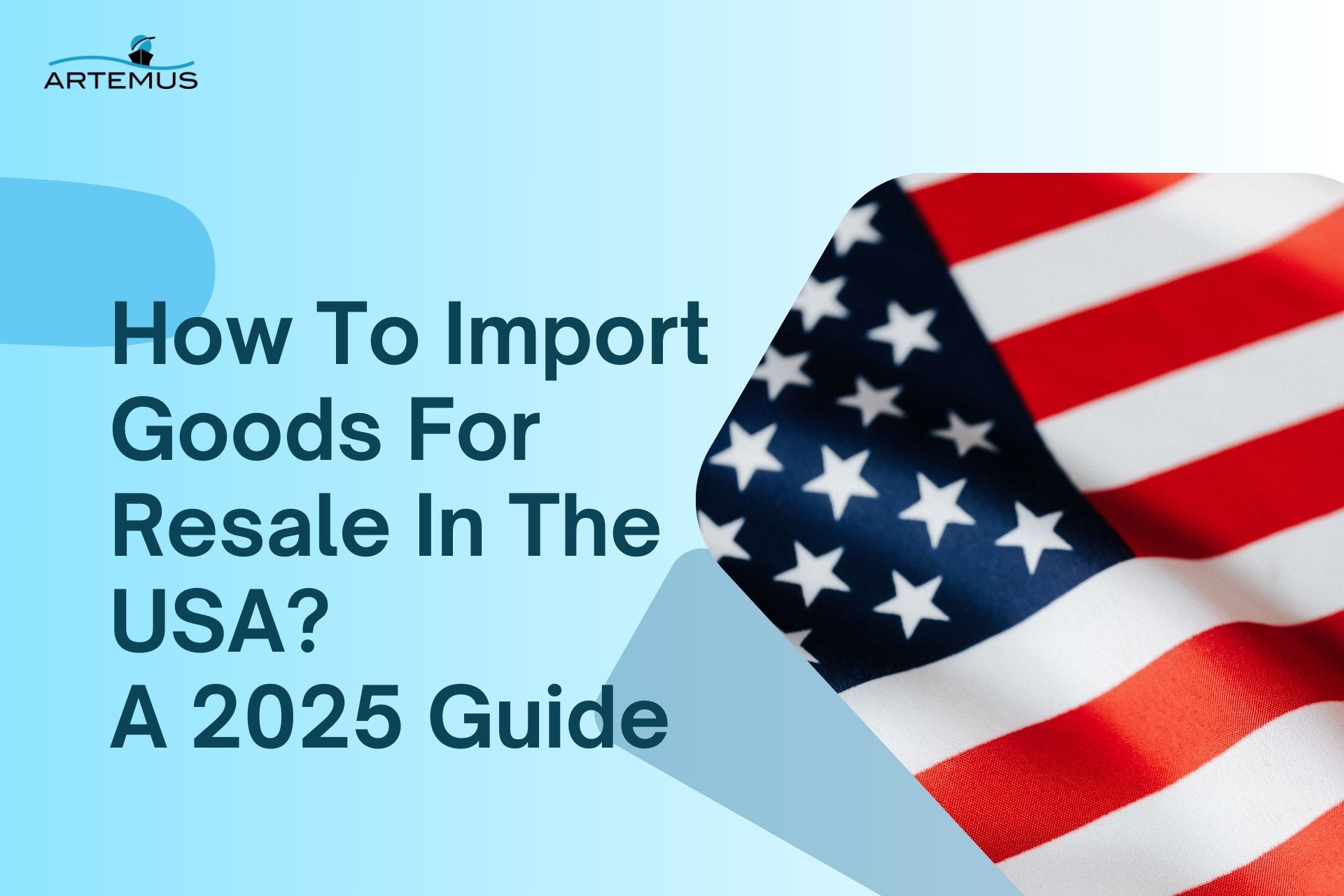
What Is Inbound Logistics & Outbound Logistics? A 2025 Guide
In the dynamic world of supply chain management, understanding the nuances of inbound and outbound logistics is crucial for operational

Exporting pharmaceutical products from India to the international market, especially to the USA, involves navigating a complex web of regulatory requirements and ensuring stringent quality standards. As a leading exporter, India has established itself as a global pharmaceutical hub, supplying medicines to regions including North America, Europe, Africa, and beyond.
However, entering markets like the USA requires adherence to specific compliance measures such as the Importer Security Filing (ISF) and the Automated Manifest System (AMS).
To streamline this intricate process, Artemus offers specialized ISF and AMS software support, ensuring your pharmaceutical exports meet all USA compliance requirements seamlessly.
Table Of Contents
Exporting pharmaceutical products from India involves navigating a series of regulatory, logistical, and compliance steps. Here is an in-depth guide on the process:
The Central Drugs Standard Control Organization (CDSCO) is the primary regulatory authority in India for pharmaceuticals. Exporters must ensure compliance with CDSCO guidelines.
Pharmaceutical exporters need to obtain the following licenses and registrations:
Conduct thorough market research to identify demand, regulatory environment, competition, and potential buyers in target markets.
Consider bilateral trade agreements and regional trade agreements which might simplify export processes and reduce tariffs.
Ensure the manufacturing facility complies with GMP standards. Regular inspections and audits by regulatory bodies are crucial.
Implement stringent quality control measures. Each batch should be tested, and a Certificate of Analysis (CoA) should be issued.
Packaging and labeling must comply with the importing country’s regulations, including language requirements, expiration dates, and storage instructions.
Pharmaceutical products must be securely packaged to prevent contamination, damage, and tampering.
Depending on the destination and urgency, choose between air freight and sea freight. Air freight is quicker, although it comes with higher costs.
For temperature-sensitive products, ensure a cold chain logistics system is in place.
Engage a reliable freight forwarder experienced in handling pharmaceutical products.
Ensure all export documents are complete and accurate to avoid delays at customs.
Hiring a customs broker can facilitate smooth clearance through customs.
Stay updated with regulatory changes in the importing countries and ensure ongoing compliance.
Renewing essential licenses and registrations promptly is vital to prevent any interruptions.
Related: Freight Forwarders Arrange Transportation Only By Ocean Shipping
India plays a crucial role in the global pharmaceutical industry, significantly impacting medicine availability worldwide. India exports pharmaceuticals to diverse regions, including the Middle East, Asia, Latin America, North America, Africa, and Europe. Notably, Africa, Europe, and North America receive nearly two-thirds of India’s pharmaceutical exports.
In 2021–22, major export destinations included the USA, the UK, South Africa, Russia, and Nigeria, with the USA leading with imports worth over $7 billion.
India’s pharmaceutical exports have shown consistent growth, especially to the USA, UK, and Russia, with compound annual growth rates (CAGR) of 6.9%, 3.8%, and 7.2%, respectively, over the past three years.
These figures highlight India’s pivotal role in ensuring global medicine supply, making it an indispensable player in the worldwide pharmaceutical landscape.
Related: What Is Ocean Freight? Everything You Need To Know
Understanding the regulatory environment for exporting pharmaceutical products from India is crucial for ensuring compliance and successful market entry. The Central Drugs Standard Control Organization (CDSCO) serves as the main regulatory body responsible for supervising the production, distribution, and export of pharmaceuticals in India.
Exporters must adhere to stringent guidelines set by the CDSCO, including obtaining necessary licenses such as the Import-Export Code (IEC) from the Directorate General of Foreign Trade (DGFT) and ensuring the manufacturing facility complies with Good Manufacturing Practices (GMP).
Additionally, the products must be registered with regulatory authorities in the importing countries, such as the US Food and Drug Administration (FDA) for the American market, which requires adherence to their specific standards and approval processes like the Drug Master File (DMF) and Abbreviated New Drug Application (ANDA).
Navigating this regulatory landscape involves meticulous documentation, rigorous quality control, and adherence to both Indian and international standards. Exporters need to stay informed about regulatory updates and maintain continuous compliance to avoid disruptions.
Related: How Long Does Sea Freight Take From China To USA?
Exporting pharmaceuticals from India necessitates a comprehensive set of documents to ensure compliance with both Indian and international regulations. These documents verify the legitimacy of the exporter, the quality and safety of the pharmaceutical products, and adherence to regulatory requirements in the importing country.
Here is a detailed list of the necessary documents:
Related: How To Import A Car From Japan To USA? A 7-Step Process
Exporting medicines from India to the USA involves various costs that can vary widely based on factors such as the type of pharmaceutical product, volume of shipment, regulatory compliance, logistics, and market entry strategies. Here are the main cost components with approximate figures in US dollars:
Summing up these various components, the total cost to export medicines from India to the USA can range widely based on the specific circumstances and scale of the operation:
These figures provide a rough estimate and can vary significantly depending on the type of pharmaceutical product, the volume of exports, and specific business strategies.
Related: How Much Does It Cost To Become A Freight Broker In 2024
India ranks among the largest producers and exporters of pharmaceuticals globally. The country’s pharmaceutical industry has been growing rapidly over the years, driven by the increasing demand for medicines globally. Here are the 5 most exported medicines from India:
Anti-infectives are the most exported medicines from India, accounting for a significant share of the country’s pharmaceutical exports. These medicines are used to treat various infections such as bacterial, viral, and fungal infections. India’s anti-infective exports include antibiotics, antiviral drugs, and antifungal medications.
Cardiovascular medicines are another significant export from India. These medicines are used to treat various heart-related conditions such as high blood pressure, high cholesterol, and heart failure. India’s cardiovascular medicine exports include beta-blockers, calcium channel blockers, and statins.
Gastrointestinal medicines are used to treat various stomach-related conditions such as indigestion, constipation, and diarrhea. India’s gastrointestinal medicine exports include antacids, anti-diarrheal drugs, and laxatives.
Central nervous system medicines are used to treat various conditions such as depression, anxiety, and insomnia. India’s central nervous system medicine exports include antidepressants, anxiolytics, and sedatives.
Anti-cancer medicines are used to treat various types of cancer. India’s anti-cancer medicine exports include chemotherapy drugs, targeted therapy drugs, and immunotherapy drugs.
Related: How To Import A Car To The United States? 2024 Regulations

Artemus Transportation Solutions provides comprehensive customs compliance support through its software solutions, addressing the requirements of the Importer Security File (ISF) and Automated Manifest System (AMS).
With extensive experience in customs compliance and logistics, Artemus helps clients navigate the complex landscape of international shipping, ensuring seamless compliance with U.S. customs regulations.
Related: Exporting Mangoes From India To The USA: How To Ship?
To start exporting from India, obtain an Importer Exporter Code (IEC) from the Directorate General of Foreign Trade (DGFT), identify your target markets, comply with export regulations, and establish a logistics and payment process.
To get a drug license for export in India, apply to the Central Drugs Standard Control Organization (CDSCO) with the required documentation, including manufacturing licenses, product details, and compliance certificates.
To find buyers for export, utilize online B2B marketplaces, trade fairs, export promotion councils, and international trade directories.

Exporting pharmaceutical products from India is vital for both the economy and global healthcare. As a major supplier of affordable generic drugs, India ensures access to essential medications worldwide, particularly in developing countries.
This process, involving regulatory compliance and quality assurance, not only boosts India’s economic growth but also improves global health outcomes.
Related: Poland’s Exports To USA: The Complete List For Opportunities

In the dynamic world of supply chain management, understanding the nuances of inbound and outbound logistics is crucial for operational

In today’s interconnected world, businesses rely heavily on global trade to expand their markets, access new resources, and drive growth.

Importing goods for resale in the USA presents a lucrative business opportunity, but navigating the complexities of U.S. customs regulations,
Get In Touch
Artemus’ Software Solutions for ISF, AMS, Japan AFR, eManifest Canada, & Panama B2B filings.